As winter descends and festive lights glitter in the darkness, many of us are familiar with the joyous celebrations of Christmas. But how many of us know that some of our cherished Christmas traditions have their roots in a raucous Roman festival called Saturnalia? In the heart of winter, the Romans would cast social norms aside, engage in feasting and merrymaking, and exchange gifts in honor of Saturn, their god of agriculture and time. In this journey through history, we will explore the intriguing story of Saturnalia, a festival that predates Christmas and continues to echo in our modern yuletide celebrations.
Key Takeaways
- Saturnalia was a Roman festival honoring Saturn, the god of agriculture, beginning on December 17th and originally lasting one day but extended up to a week. It marked the end of the autumn planting season, featured public events like sacrifices and banquets, as well as private celebrations such as feasts and gift-giving.
- One of the most notable customs of Saturnalia was the temporary reversal of social norms, where slaves could participate in festivities, were served by their masters, and a mock king (Saturnalicius princeps) was chosen to command the celebrations, reflecting the Golden Age of Saturn when all were considered equals.
- Saturnalia’s legacy influenced later celebrations; incorporating role reversals and festivity into Roman and medieval customs, it shows parallels with modern Christmas traditions such as gift exchanges and festivities, although debates continue regarding its direct impact on the establishment of Christmas.
The Festive Roots of Saturnalia
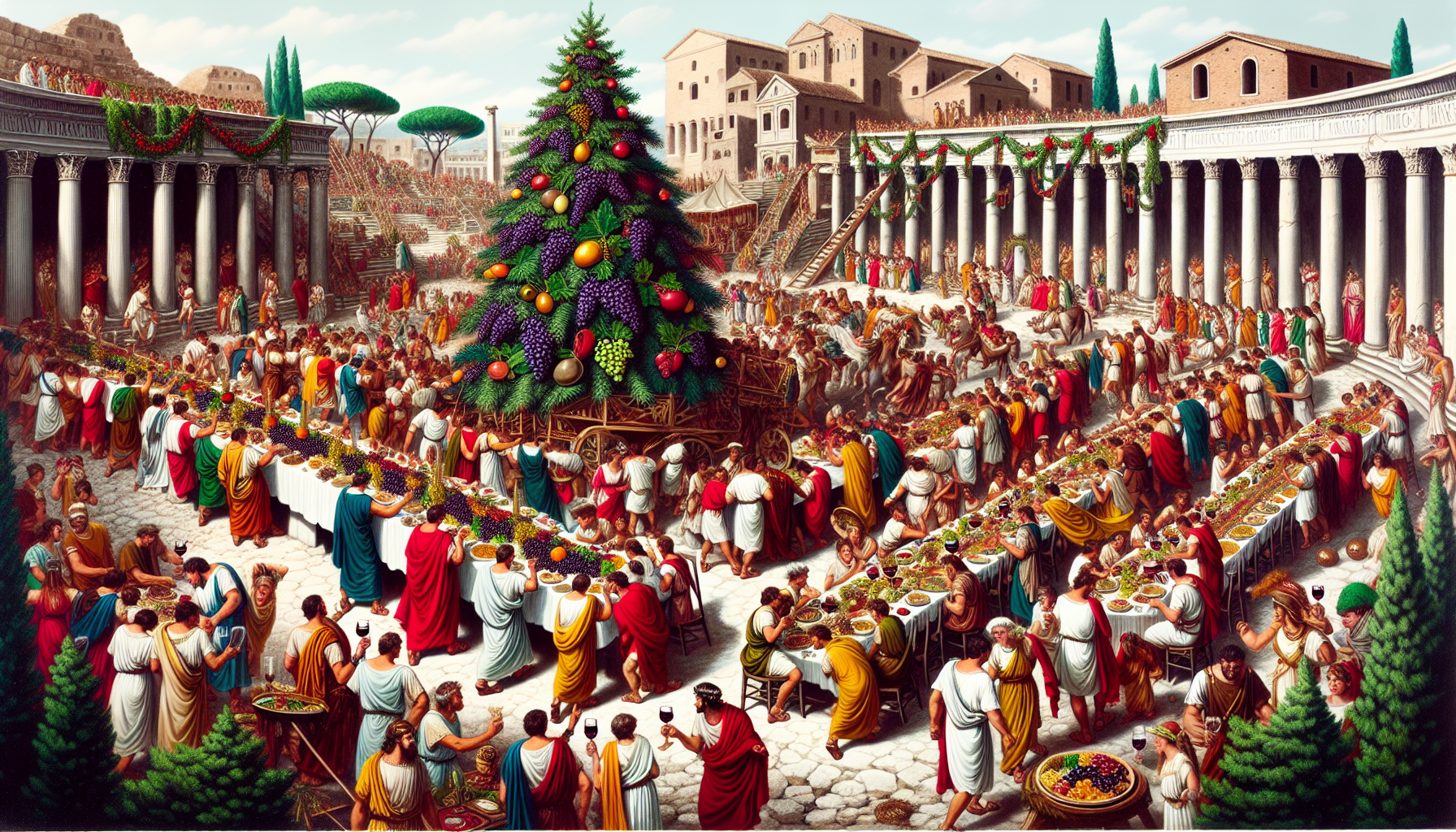
Marking the end of the autumn planting season in Rome, Saturnalia was a festival as vibrant and lively as the Roman Empire itself. This festival, held in honor of Saturn – the Roman god of agriculture and time, was characterized by feasting, drinking, and merrymaking. The festival began on December 17th, but as the Roman calendar evolved, so too did the festival. Originally a one-day celebration, it expanded over time to span an entire week, from December 17th to the 24th.
A significant event in Roman history, the Battle of Lake Trasimene in 217 BC, instigated a major transformation in the festival. This battle, part of the Second Punic War, saw the Romans suffer a heavy defeat at the hands of Carthage. To lift the spirits of the Roman people, the festival of Saturnalia was reformed, incorporating elements of the Greek rite. This included Greek-style sacrifices, a communal feast, and the chanting of ‘io Saturnalia’, a phrase that would become synonymous with the festival.
Saturnalia was more than just a time for merrymaking; it was a celebration of the winter solstice and the anticipation of the spring harvest to come. The Romans believed that by honoring Saturn, they would be blessed with a bountiful harvest in the new year. Consequently, each December, the city of Rome resonated with joy and laughter as the Romans immersed themselves in the Saturnalia festivities.
The God Saturn and His Celebration
Saturnalia was a festival dedicated to Saturn, a deity of significant importance in Roman culture. Associated with agriculture, Saturn was believed to have ruled over the world during the Golden Age, a time of peace, prosperity, and abundance. The Romans depicted Saturn in their art as a god holding a scythe, symbolizing his connection to the harvest. This association with agriculture made Saturn an important figure in the Roman Empire, a civilization built on the fruits of the earth.
The worship of Saturn took place in the Temple of Saturn, one of the oldest cult sites in Rome. Located in the Roman Forum, the temple housed the state treasury and served as an administrative center for the quaestors, public officials responsible for overseeing the mint. The temple served as the center of Saturnalia festivities, hosting a public banquet in Saturn’s honor. This was followed by the Opalia, another festival dedicated to Ops, Saturn’s wife, and the goddess of abundance.
Winter Solstice and Roman Traditions
In Roman traditions, great significance was attributed to the winter solstice, the year’s shortest day. As the days began to lengthen, the Romans saw it as a time of rebirth, a promise of the return of the sun’s warmth and the fertility it brought to their crops. Saturnalia, held around the time of the winter solstice, was a celebration of this anticipated abundance. The festivities, filled with singing and feasting, were not just in honor of Saturn, but also a way to stave off the darkness of winter and bring about the prosperity of the coming spring.
The celebration of Saturnalia underwent changes over time, influenced by various Roman emperors. Initially a three-day festival during the reign of Augustus, it expanded to nearly two weeks under Macrobius. This extension of the festivities reflected the importance of Saturnalia in Roman society, a time when the normal order was suspended, and all could partake in the joy and abundance of the season.
The Social Upside-Down of Saturnalia
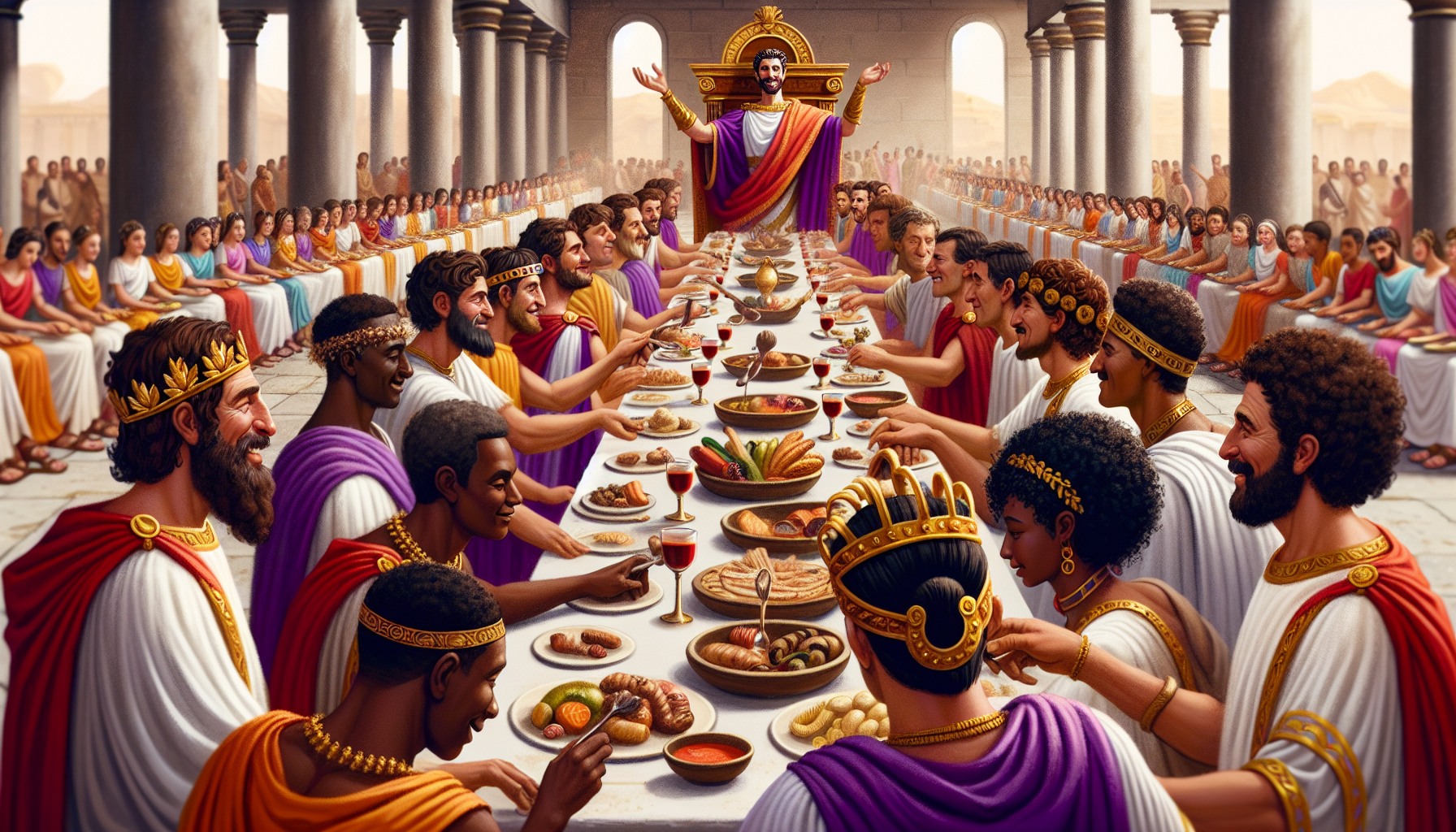
The temporary inversion of social norms was one of Saturnalia’s most fascinating aspects. For a brief period, the rigid hierarchy of Roman society was set aside, and roles were reversed. During Saturnalia:
- Slaves were served by their masters
- Children were indulged by their parents
- A mock king, the Saturnalicius princeps, was chosen to oversee the merriment.
Such role reversal was not exclusive to slaves and masters. During Saturnalia, all citizens were equal. Senators dressed in the same attire as their servants, and all were free to participate in games and festivities that were normally restricted by their social status. This period of social inversion served as a reminder of the Golden Age of Saturn, a mythical time when all were equal, and abundance was shared by all.
Role Reversals in Roman Society
Saturnalia saw a distinct upending of societal norms. Some of the key features of this festival were:
- Slaves were exempt from labor and allowed to join in the festivities.
- In some instances, they were even seated at the head of the table, with their masters serving them.
- This temporary suspension of the social order allowed the Romans to indulge in a brief period of freedom and equality, a stark contrast to the strict hierarchy that usually governed their lives.
However, the enjoyment of this temporary freedom during the Roman Republic wasn’t exclusive to slaves. All Romans, regardless of their social status, were allowed to participate in activities usually reserved for the elite. Gambling, often frowned upon, was openly enjoyed. Senators and slaves dressed alike, discarding their usual attire for simple tunics.
For a brief period during Saturnalia, all Romans were equal, united in their celebration of the winter solstice and the bounty of the coming year. This tradition, which dates back to the century AD, remains a significant part of ancient Roman history.
The Significance of the Mock King
The role of the mock king, or Saturnalicius princeps, was another fascinating aspect of Saturnalia. Chosen by chance, the mock king was given the power to command his fellow celebrants, issuing whimsical orders and creating a sense of chaos and fun. The process of selecting the mock king involved hiding a coin or small object in a cake. The lucky individual who found the object in their portion was named the Saturnalicius princeps for the duration of the festival.
The role of the mock king served to further invert the social order, turning the hierarchy of Roman society on its head. Through his nonsensical commands, the mock king satirized real power dynamics, allowing for a period of social reversal and equality. This was a time when all could partake in the joy and abundance of Saturnalia, regardless of their station in life.
Saturnalia Celebrations: From Public to Private
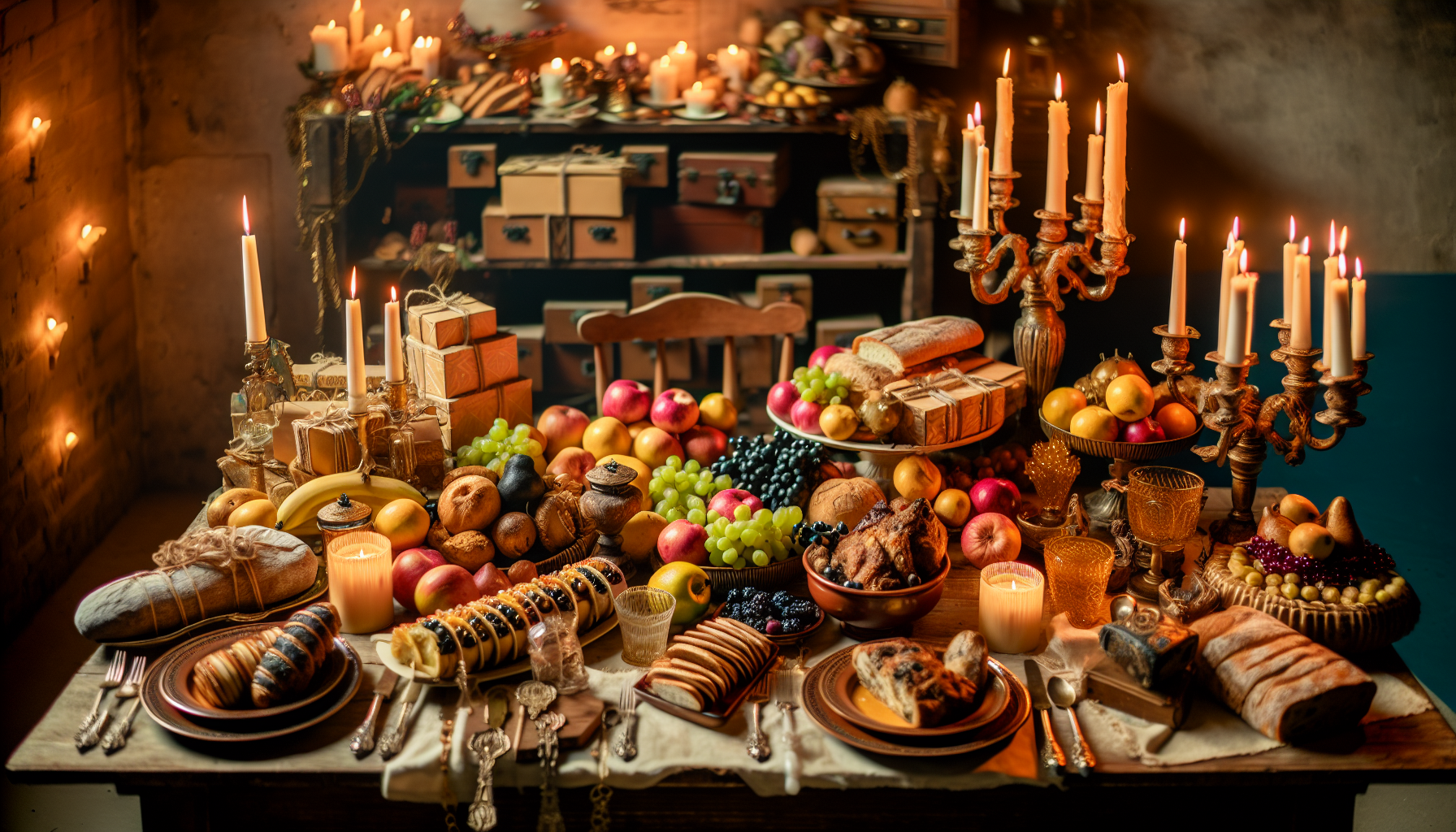
Saturnalia festivities were not limited to the public sphere. While the public rituals, such as the sacrifices at the Temple of Saturn, were an important part of the celebration, the private observances of Saturnalia were just as significant. Across Rome, households celebrated with feasts, games, and the exchange of gifts, creating a festive atmosphere that permeated every corner of the city.
Public banquets were held in the streets of Rome, filling the air with the sound of singing and laughter. At the heart of the festivities was the Temple of Saturn, where sacrifices were made in honor of the god. Here, the bonds that usually tied the feet of Saturn’s statue were loosened, symbolizing the freedom and joy of the festival. The loosening of Saturn’s bonds was not just a symbolic act, but a reflection of the freedom that all Romans enjoyed during Saturnalia.
However, the true spirit of Saturnalia was revealed within the homes of the Romans. Here, away from the public rituals, the Romans celebrated with their families and friends. They feasted on rich food, played games, and exchanged gifts. These private celebrations were a crucial part of Saturnalia, a time for Romans to celebrate the season with their loved ones.
The Public Rituals of Ancient Rome
Saturnalia’s public rituals were grand spectacles, mirroring the festival’s significance in Roman society. In the Roman Forum, at the Temple of Saturn, a sacrificial pig would be offered to the god, marking the start of the festivities. This was followed by a public banquet, a feast that was shared by all Romans, regardless of their social status.
The freeing of Saturn’s statue was another key ritual of the festival. Throughout the year, the feet of Saturn’s statue were bound in woolen strips, symbolizing the constraints of the god. But during Saturnalia, these bonds were loosened, reflecting the freedom and abundance of the festival. It was a symbolic act, a reminder to all Romans of the bounty and prosperity that Saturn represented.
Domestic Merriment and Gift Giving
Contrary to the grand spectacles of Saturnalia’s public rituals, the private celebrations were characterized by warmth and joy. Across Rome, households celebrated with feasts, games, and the exchange of gifts. It was a time for families to come together, to celebrate the end of the year and the promise of the new one to come.
Gift-giving was a central part of these domestic celebrations. During Saturnalia, Romans exchanged a variety of gifts, from wax taper candles, symbolizing the return of light after the solstice, to small figurines made of wax or pottery, known as sigillaria. These gifts were not just tokens of affection, but a reflection of the generosity and abundance that Saturnalia represented.
The Evolution of Saturnalia Through Time
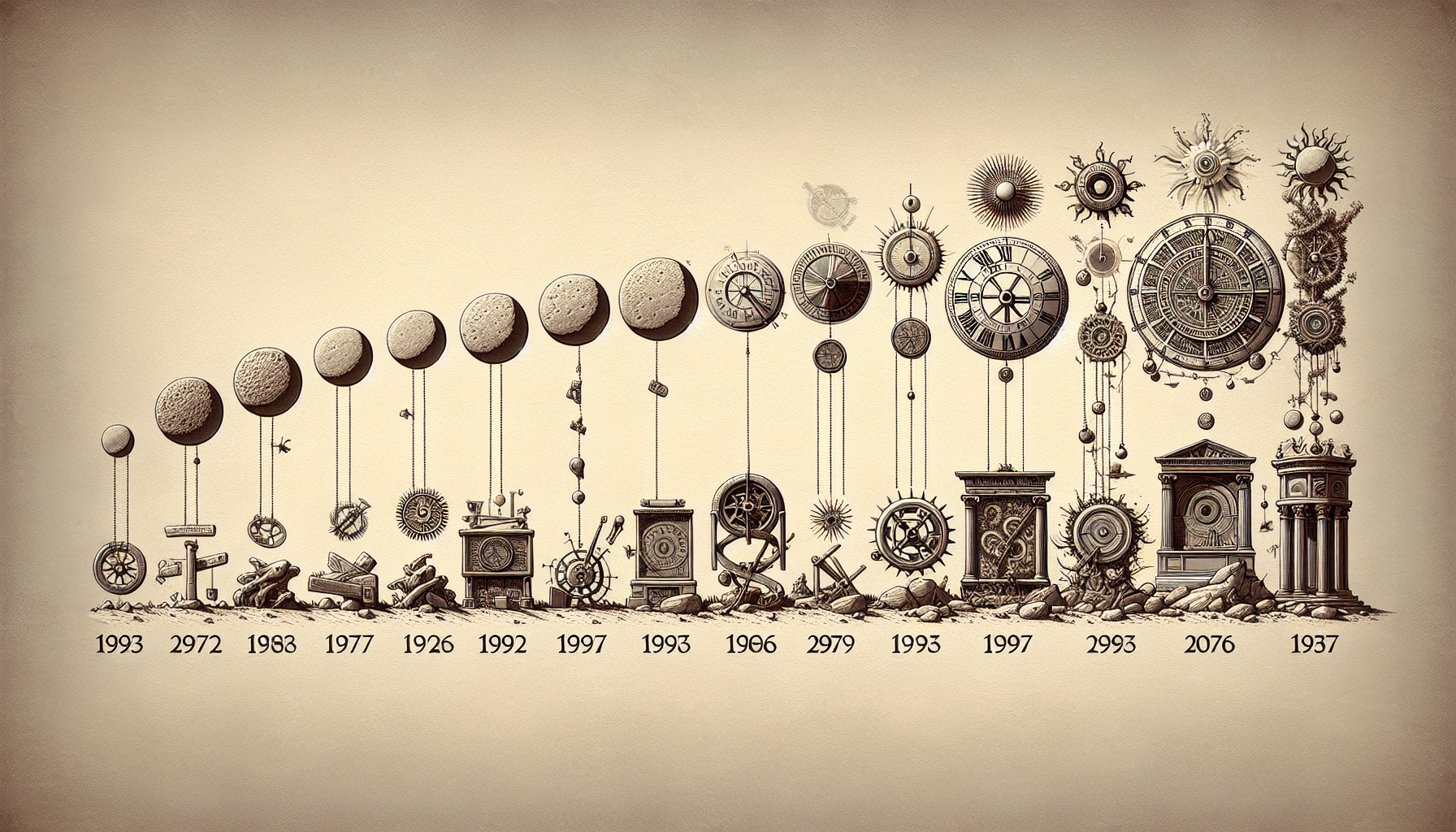
As the Roman Empire changed over time, so did the celebration of Saturnalia. Initially a one-day festival, Saturnalia expanded to a weeklong celebration under the Julian calendar. This expansion reflected the importance of Saturnalia in Roman society, and the joy and anticipation that it brought to the end of the year.
Introduced by Julius Caesar, the Julian calendar added two days to December. This extension had an indirect impact on Saturnalia, extending the festival from three days to a week. While the official start of Saturnalia remained on December 17, the festival now continued until December 24, adding to the merriment and anticipation of the holiday season.
Saturnalia’s evolution left a lasting imprint on subsequent festivals. The traditions of Saturnalia, from the reversal of social roles to the exchange of gifts, were absorbed into other Roman and medieval customs. Even today, echoes of Saturnalia can be found in our modern Christmas traditions, a testament to the enduring influence of this ancient Roman festival.
Saturnalia in the Julian Calendar
Before the Julian calendar’s introduction, Saturnalia, celebrated on December 17, was a one-day festival. However, with the implementation of the Julian calendar by Julius Caesar, the festival was extended to three days, beginning on the same date but now extending to December 19.
The altered duration of Saturnalia mirrored the festival’s importance in Roman society. Saturnalia was not just a time for merriment and celebration, but also a crucial period in the Roman agricultural calendar. By extending the festival, the Romans ensured that the end of the planting season was properly celebrated, and the anticipation of the coming harvest fully enjoyed.
Saturnalia’s Influence on Later Festivals
The evolution of Saturnalia began to shape other festivals. The traditions of Saturnalia, such as the exchange of gifts and the lighting of candles, were absorbed into Roman and medieval customs. The festival’s influence can even be seen in modern Christmas traditions, with the exchange of gifts and the festive feasting bearing a striking resemblance to the customs of Saturnalia.
However, despite the similarities, there is ongoing debate about the direct connection between Saturnalia and Christmas. Some argue that while there are shared customs, the two festivals are distinct celebrations, each with their own unique traditions and significance. Others believe that Saturnalia played a key role in shaping the customs of Christmas, with the Christian church integrating the popular pagan festival into its own calendar to facilitate the conversion of the Roman population.
Saturnalia’s Echoes in Christmas Traditions
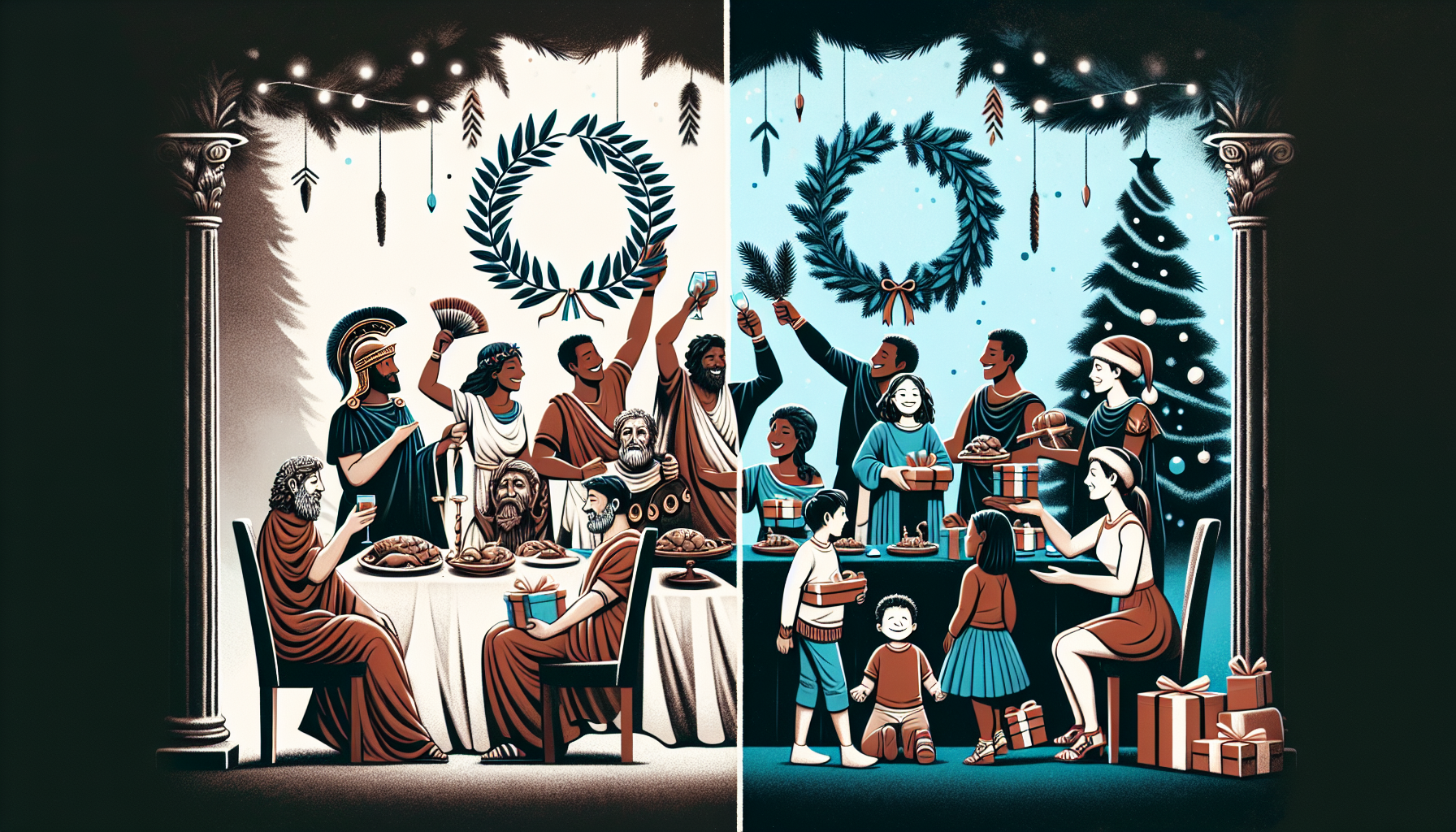
Saturnalia’s echoes in modern Christmas traditions are distinct and hard to ignore. Many of our beloved Christmas customs have their roots in this ancient Roman festival, including:
- The exchange of gifts
- The lighting of candles
- Festive feasting
- The use of greenery and wreaths in our Christmas decorations
These traditions are a reminder of the enduring influence of Saturnalia.
Nevertheless, the transition from Saturnalia, a pagan holiday, to Christmas, a Christian holy day, was not a straightforward process. The early Christian church faced the challenge of integrating pagan traditions into its own celebrations, a strategic move that was designed to facilitate the conversion of the Roman population. Over time, many of the customs of Saturnalia were absorbed into Christmas, creating the holiday that we know and love today. Some of these customs include:
- Decorating trees with ornaments and lights
- Exchanging gifts
- Singing carols
- Lighting candles
- Feasting and celebrating with family and friends
These Merry Christmas traditions have become an integral part of celebrations around the world.
From Pagan Holiday to Christian Holy Day
Saturnalia’s transition to Christmas occurred gradually. For approximately a century after the conversion of Rome to Christianity, Saturnalia continued to be celebrated. However, over time, the customs of Saturnalia were integrated into Christmas, allowing the Christian church to claim the popular pagan festival as its own.
The adoption of Saturnalia customs into Christmas was not just a matter of convenience, but a strategic move by the early Christian church. By integrating familiar customs into its own celebrations, the Christian church could make its new holiday more appealing to the Roman population. This process of assimilation was not without controversy, but it ultimately helped to shape the Christmas traditions that we know today.
The Debate: Is Christmas Rooted in Saturnalia?
The debate regarding the roots of Christmas in Saturnalia continues. On one hand, there are clear similarities between the two festivals. Both involve the exchange of gifts, the lighting of candles, and the celebration of the winter solstice. However, there are also distinct differences. Saturnalia was a weeklong festival of merriment and social inversion, while Christmas is a religious celebration marking the birth of Jesus Christ.
There is currently no scholarly consensus on the direct connection between Saturnalia and Christmas. Some argue that while Saturnalia may have influenced some Christmas traditions, the two festivals are distinct celebrations with their own unique significance. Others believe that Saturnalia played a key role in shaping the customs of Christmas, particularly in the early years of the Christian church. Regardless of the debate, it is clear that Saturnalia has left a lasting imprint on our modern Christmas celebrations.
Winter festivals with unique traditions and customs are celebrated by other cultures beyond Rome. From the Hopi Indian Festival of Soyal to the Polish celebration of Gody, these festivals highlight the multicultural nature of ancient societies. And while Saturnalia may be one of the most well-known of these winter festivals, it is by no means the only one.
Kronia, a Greek festival dedicated to the god Kronos, bears many similarities to Saturnalia. Like Saturnalia, Kronia was a celebration of the harvest, marked by feasting and merrymaking. The influence of Kronia on Saturnalia is a testament to the syncretism between Roman and Greek traditions, a blending of cultures that was common in the ancient world.
A richer understanding of the past can be gained through exploring Saturnalia and other ancient festivals. These festivals were not just occasions for celebration but were also a reflection of the societies in which they were celebrated. They reveal the hopes and fears of our ancestors, their relationships with each other and the natural world, and the enduring human desire for joy and abundance.
Festivities Beyond Rome: A Multicultural Perspective
Rome was not the only culture to celebrate winter festivals. Across the ancient world, societies marked the winter solstice with their own customs and traditions. From the Hopi Indian Festival of Soyal to the Polish celebration of Gody, these festivals shared common themes of celebration and anticipation of the coming spring.
While these festivals were unique to their respective cultures, they often incorporated common elements. The use of greenery, the lighting of fires, and the celebration of the solstice were common across many ancient societies. These shared customs highlight the multicultural nature of ancient societies, revealing a shared human desire to celebrate the cycle of the seasons and the bounty of the earth.
The Greek Equivalent and Syncretism
Kronia, a Greek festival, presents an interesting parallel to Saturnalia. Dedicated to Kronos, the Greek god of agriculture, Kronia was a celebration of the harvest, similar to Saturnalia. The festival was marked by feasting and merrymaking, and like Saturnalia, involved a temporary inversion of social norms, with slaves and masters dining together.
The similarities between Kronia and Saturnalia are a testament to the syncretism that was common in the ancient world. As cultures interacted and influenced each other, their traditions and customs often blended, creating new practices that incorporated elements from each culture. This blending of cultures is reflected in the celebration of Saturnalia, a Roman festival with clear Greek influences.
Summary
In exploring the story of Saturnalia, we have journeyed back to the heart of the Roman Empire, to a time when the winter solstice was marked with feasting, merrymaking, and the casting aside of social norms. We have seen how this ancient festival has influenced modern Christmas traditions, from the exchange of gifts to the festive feasting and the lighting of candles.
While the debate over whether Saturnalia is the direct predecessor of Christmas continues, there is no denying the enduring influence of this ancient festival. From Rome to our modern homes, the spirit of Saturnalia lives on, a reminder of our shared human desire for joy, abundance, and the celebration of life.
Frequently Asked Questions
What happened during Saturnalia?
During Saturnalia, Roman citizens and slaves indulged in excessive gambling, drinking, and revelry, with relaxed social norms and a carnival atmosphere, including the suspension of work and business, temporary freedom for slaves, and public feasting.
Is Saturnalia and Christmas the same?
While both Saturnalia and Christmas involve gift-giving and feasting in December, Christmas has evolved beyond its pagan roots and Christian origins to become a global celebration of joy and family. However, Saturnalia, an ancient Roman festival, laid the foundation for many Christmas traditions.
What was sacrificed on Saturnalia?
During Saturnalia, a young pig was traditionally sacrificed at the Temple of Saturn as an offering to the deity, and then eaten at a public feast the following day. This sacrifice was part of the festivities in honor of Saturn, the Roman god of farming and the harvest.
What is the myth of Saturnalia?
Saturnalia was an ancient Roman pagan festival honoring the agricultural god Saturn, and it was held in mid-December near the winter solstice. The traditions associated with Saturnalia, such as wreaths, feasting, and gift-giving, have influenced modern Christmas celebrations.
What is the meaning behind Saturnalia?
Saturnalia was an ancient Roman festival honoring the god Saturn, associated with the winter solstice and the harvest. It featured public feasting, gift-giving, and traditional decorations such as wreaths and candles.
